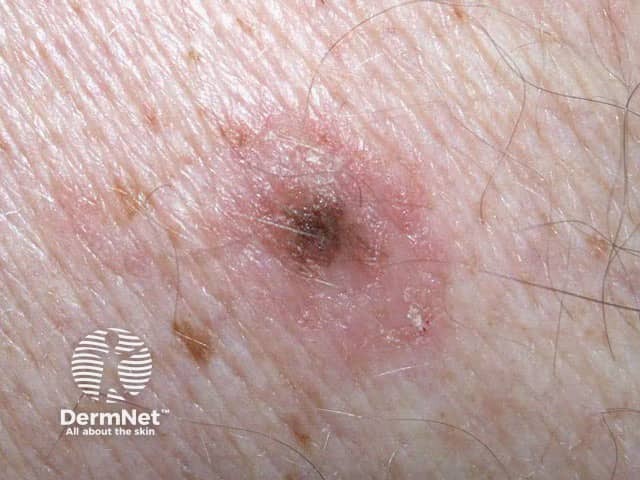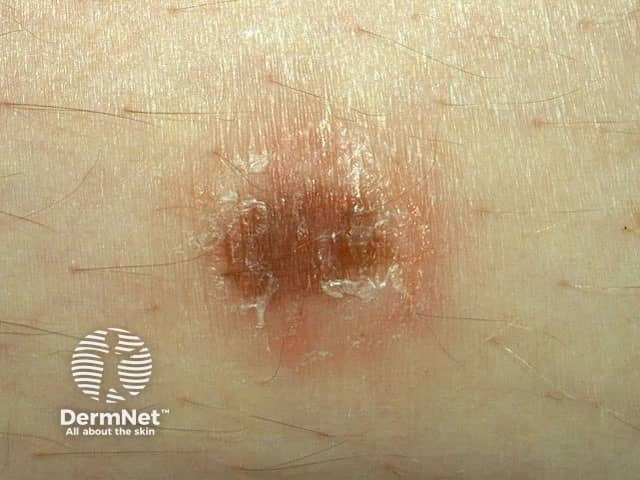Main menu
Common skin conditions

NEWS
Join DermNet PRO
Read more
Quick links
Introduction Demographics Causes Signs and symptoms Treatment
Meyerson naevus is a mole that is surrounded by eczema (an itchy rash also known as dermatitis). A mole is more properly called a benign melanocytic naevus.
Meyerson first described the condition in 1971 where he reported 2 men with benign melanocytic naevi surrounded by eczema. Meyerson naevus is also referred to as halo dermatitis, halo eczema and Meyerson's phenomenon.

Meyerson naevus

Meyerson naevus
Meyerson naevus appears to occur more commonly in young males (average age 30 years). It is nearly three times as common in males compared to females. Meyerson naevi may co-exist with halo naevi. It may also occur in patients with eczema or other atopic conditions (these are asthma and hay fever). However, it most often occurs in healthy individuals without any pre-existing conditions.
The cause of Meyerson naevus is not known. Skin biopsy specimens show inflamed skin rather like that seen in psoriasis and eczema.
Excision of the central mole results in resolution of the eczematous reaction, which suggests the mole is the reason for it. It may be the result of immune cells (CD4+ lymphocytes) reacting against target antigens on the surface of the naevus cells (these are melanocytes).
Factors that have been found to trigger Meyerson naevus include:
Meyerson naevus usually develops as a single itchy patch, but multiple lesions appearing at the same time have also been reported. Meyerson naevus consists of a centrally positioned naevus that has regular borders and has a uniform colour. This is surrounded by an red, dry or blistered rash that may or may not be itchy. The naevus (mole) in the centre of the halo is rarely cancerous (melanoma).
Meyerson naevus is sometimes mistaken for a halo mole (Sutton naevus). The main difference between these two lesions is what happens to the central naevus. The lesion in the centre of a Meyerson naevus never changes or fades away even when the surrounding eczema has resolved. In contrast, the central mole of a halo mole usually fades in colour and eventually disappears altogether.
The eczema around the Meyerson naevus usually resolves by itself within weeks. However, if necessary it can be treated with topical corticosteroid cream or ointment for a few days or weeks.
The central naevus remains unchanged. Because the naevus is harmless, it does not need to be removed. Surgical excision may be arranged if there is any concern that the lesion is melanoma, or because the symptoms are a nuisance.